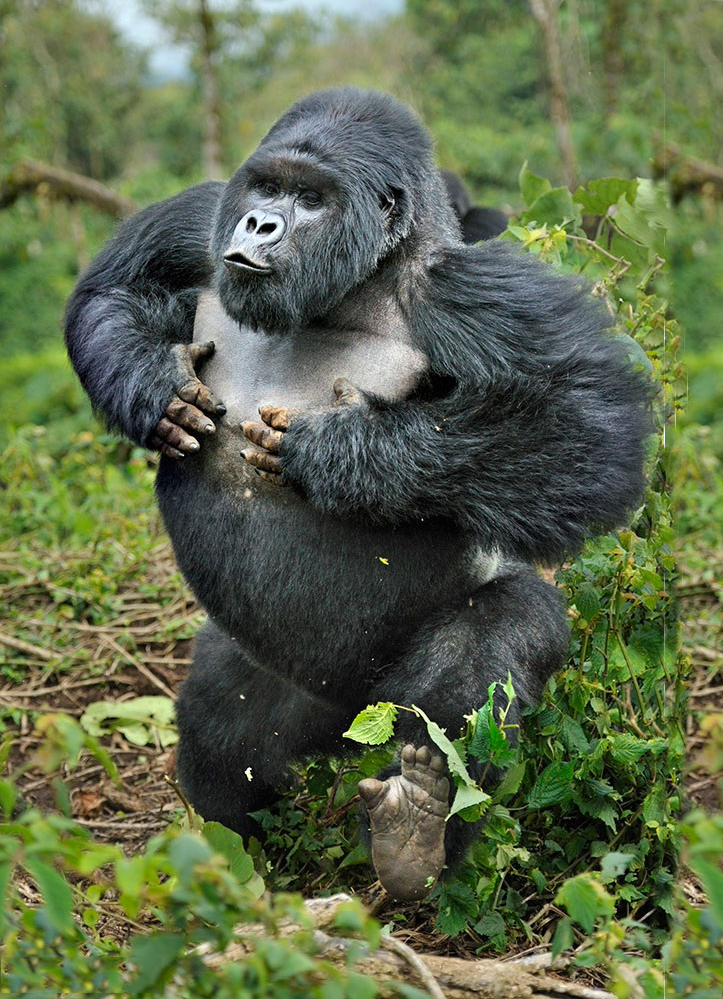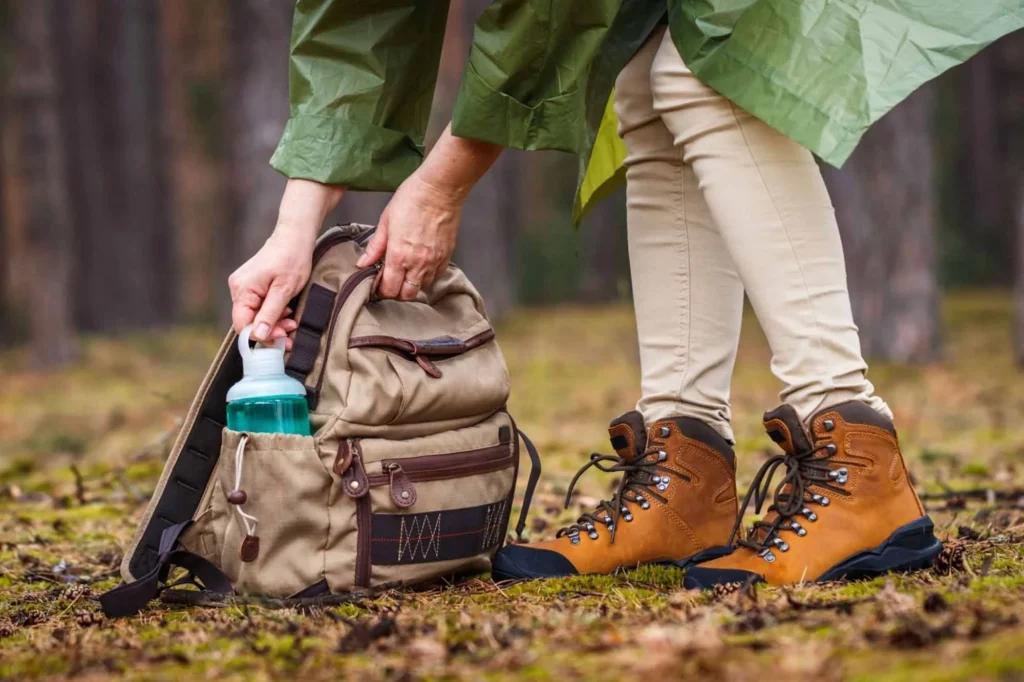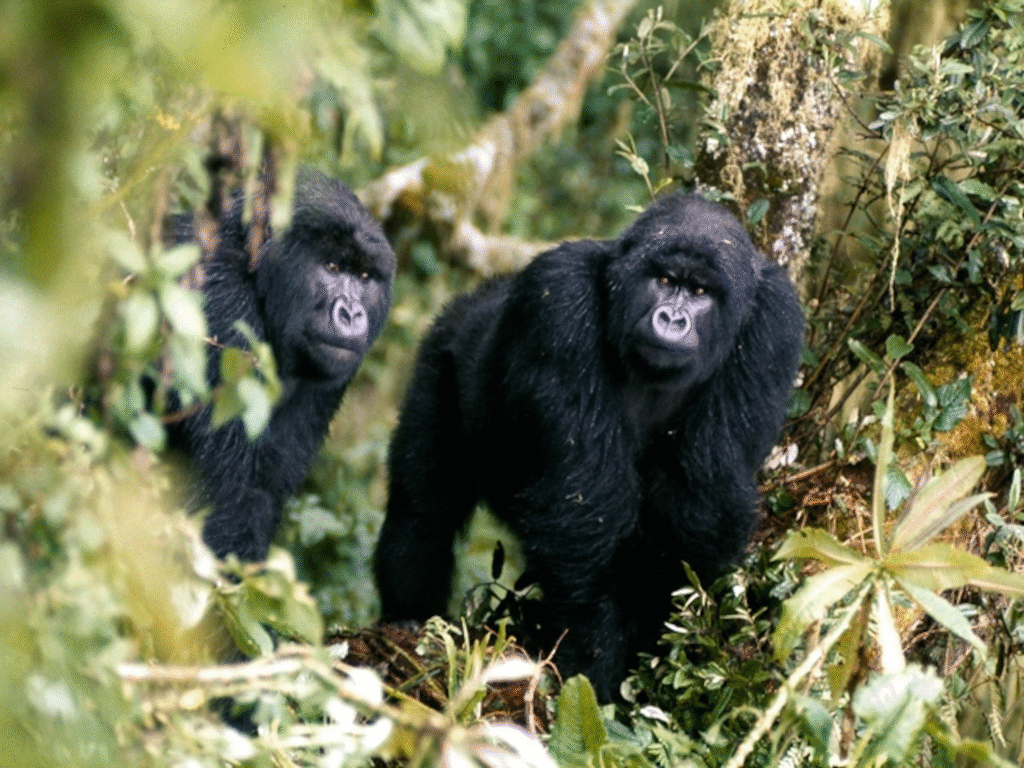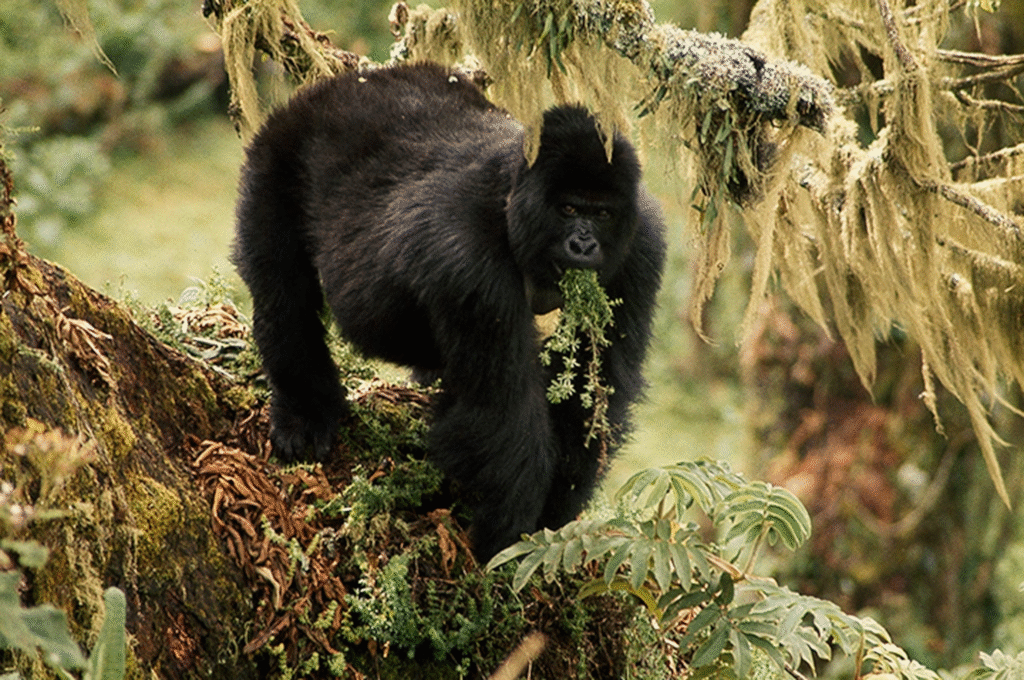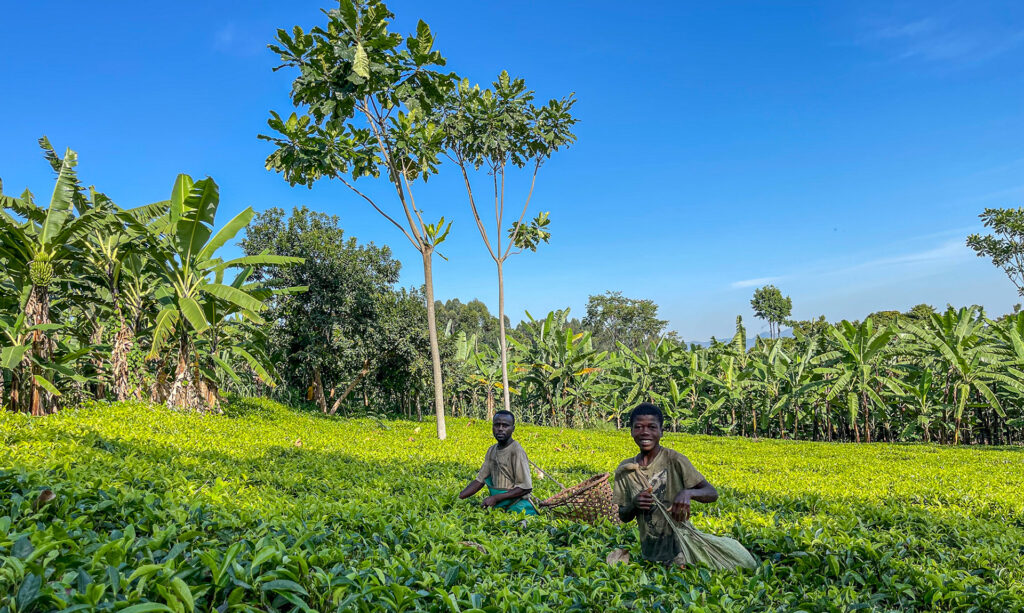Where the soul of the forest whispers in the mist
Gorilla trekking is one of the most transformative wildlife experiences on Earth — but with that privilege comes responsibility. Deep in the heart of Uganda’s Bwindi Impenetrable and Mgahinga Gorilla National Parks, the chance to witness endangered mountain gorillas in their natural habitat is both thrilling and humbling. These majestic primates share over 98% of our DNA, making them not just wildlife, but our wild cousins. That closeness, however, is precisely why a strict code of conduct exists — to protect both gorillas and people.
These rules are not arbitrary.
They’re built on decades of research, conservation science, and ethical tourism practices. They ensure minimal stress for gorilla families, reduce the risk of disease transmission, and support a sustainable future for gorilla tourism in Uganda. Knowing them, understanding them, and following them is an essential part of the trekking experience — because true wildlife travel is not about taking from nature, but treading gently within it.
So lace up your boots, grab your camera, and prepare to meet the wild — this is where your gorilla trekking dreams and unforgettable safari adventures truly begin.
Truly Iconic Highlights in Uganda
Trek through Bwindi’s mystical rainforest and meet the endangered mountain gorillas in their breathtaking natural home.
Encounter mountain gorillas and golden monkeys on Mgahinga’s misty volcanic trails, where culture and alpine wildlife thrive together.
Unwind after your trek with a peaceful canoe ride across Lake Bunyonyi, Uganda’s most tranquil and scenic highland lake.
Enhance your gorilla trekking safari with an optional chimpanzee encounter in Uganda’s lush forests, adding depth and diversity to your primate adventure
Gorilla Trekking Rules in Uganda – Safety, Respect & Ethics in the Forest
There’s a moment during every gorilla trek when time seems to stand still. The leaves part, and there, among the vines and mist, a mountain gorilla appears. You stop breathing. Your heart slows. You’re no longer just a visitor — you’re part of something ancient and wild, something fragile and incredibly powerful.
But to reach that moment with grace, rules must be followed. Not just for the safety of humans, but to protect these extraordinary animals — our cousins, our mirrors in the jungle. Gorilla trekking in Uganda is a privilege, not a right. And with privilege comes a sacred responsibility: to tread gently, to behave respectfully, and to uphold the values that allow gorillas to live freely in their forest homes.
Let’s dive into the essential gorilla trekking rules in Uganda, the ethics behind them, and what they mean for you, the gorillas, and the future of conservation.
Why Rules Matter: Protecting the Future of Gorilla Tourism
Uganda’s Bwindi Impenetrable National Park and Mgahinga Gorilla National Park are not zoos or safari parks. They are wild, living ecosystems where gorillas roam, feed, raise young, mourn, and thrive. These are critically endangered animals — fewer than 1,100 mountain gorillas remain on Earth.
The rules of gorilla trekking are not just formalities. They’re the backbone of a globally respected conservation effort that has allowed gorilla numbers to rise, communities to benefit, and tourists to share a safe, meaningful experience. By understanding and honoring these rules, you’re not just a guest in the forest — you’re a guardian of it.
Before the Trek: Health, Hygiene, and Group Conduct
1. Only healthy individuals are allowed to trek.
Gorillas share over 98% of our DNA, which makes them highly vulnerable to human diseases. What feels like a harmless cold to you can be deadly to them. If you’re unwell — especially with flu-like symptoms — you will be kindly but firmly asked not to participate. This rule may feel frustrating in the moment, but it’s a cornerstone of ethical trekking.
2. Briefing is mandatory.
Every trek begins with a compulsory briefing session at the park headquarters. Here, rangers explain the dos and don’ts, assign you to a gorilla family, and answer your questions. Even if you’ve trekked before, every forest and every family is different, and a fresh reminder keeps everyone aligned.
3. Group sizes are strictly limited.
Only eight people per day may visit a habituated gorilla family. This minimizes stress on the animals and preserves the intimate nature of the encounter. It also allows you to truly experience the moment — without the distraction of large crowds.
On the Trail: Behavior, Distance, and Respect
4. Keep your distance – at least 7 meters.
Even if a gorilla approaches you — and they sometimes do, out of curiosity — the rule is to stay still and keep the minimum distance. This protects you from any accidental aggression and prevents the transmission of illness.
5. Speak softly and move slowly.
The forest is a place of peace, and gorillas are sensitive to sound. Loud talking, shouting, or sudden movements can scare or provoke them. Always follow your ranger’s pace and cues. If you need to adjust your position for a better view or photo, signal discreetly.
6. No touching the gorillas. Ever.
No matter how close they come, no matter how adorable a young gorilla might seem, do not reach out to touch. Physical contact is strictly prohibited. Even if a gorilla brushes past you, remain calm and still — your presence alone is a gesture of connection.
7. No eating, drinking, or smoking near gorillas.
Food smells can attract gorillas and create dangerous habits. Smoking is strictly forbidden in the park. Wait until you’re well away from the gorilla group before you eat or drink.
8. Photography rules apply.
Flash photography is not allowed. Not only does it startle the gorillas, but it also ruins the natural feel of the moment. Take steady shots using natural light. Be respectful — sometimes the best photo is one taken with your eyes, not your lens.
The One Hour Rule: Sacred, Short, and Non-Negotiable
Once you locate the gorilla family, you’re allowed only one hour with them. That hour is timed and regulated — not to limit your joy, but to ensure the gorillas aren’t overexposed to human presence. They need time to feed, rest, and raise their young naturally. Rangers will signal when the hour begins and ends. Respect it. Live it fully.
After the Trek: Reflection and Responsibility
9. Do not litter, not even a tissue.
The forest is pristine — keep it that way. Everything you bring in, take out. Even organic waste like fruit peels should not be left behind. Gorillas can ingest it and fall sick.
10. Respect the community and their culture.
You’re not just trekking in a park — you’re passing through villages, trails, and communities that co-exist with the gorillas. Greet people, buy from local shops, tip your guides and porters generously. Your behavior helps sustain the very communities that protect these animals.
More Gorilla Trekking Information to Know.
Gorilla trekking goes far beyond just the hike — it’s a deep, emotional journey into the heart of Africa’s last wild rainforests. Knowing the right timing, permits, fitness tips, and park details can turn your experience from good to unforgettable.
In the Realm of Giants – Bwindi & Mgahinga in Frames.
Wander through an elegant gallery capturing Uganda’s most exclusive gorilla sanctuaries, where ancient forests cradle the last mountain gorillas in a world of mist, mystery, and majesty.
Essential Planning Tips for Visiting Uganda’s National Parks.
Get ready for the wild heart of Africa with expert travel tips on when to visit, what to pack, where to go, and how to make the most of your safari across Uganda’s breathtaking national parks.
Why Uganda for Gorilla Trekking?
Uganda is not just a destination — it's the very soul of gorilla trekking. With over half of the world’s remaining mountain gorillas calling its misty forests home, Uganda offers the rarest encounters in their most authentic setting. Here, your journey is not rushed or crowded. Instead, you’re guided by experienced rangers through pristine jungles where gorillas live as they always have — wild, free, and magnificent
From insider travel insights to unforgettable trekking guides, our blog is your trusted path into Uganda’s wild heart — connecting you with mountain gorillas, breathtaking landscapes, and the soul-stirring adventures that make this land unlike any other.

